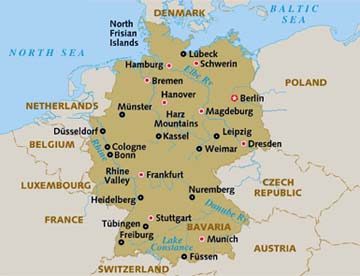Poll shows a third of Germans want their D-Mark back
Berlin -  More than a third of Germans would like their D-Mark back, 10 years after European Union leaders took the decision to introduce the euro, according to a representative survey by the Association of German Banks (BdB) published Friday.
More than a third of Germans would like their D-Mark back, 10 years after European Union leaders took the decision to introduce the euro, according to a representative survey by the Association of German Banks (BdB) published Friday.
Asked whether they would like the D-Mark back to replace the euro, 34 per cent of respondents said Yes, against 65 saying No.
The BdB released the survey to to coincide with decision taken on the night of May 2-3, 1998 to switch formally to the euro in 11 EU members from January 1, 1999.
Euro notes and coins were introduced three years later.
The main reason for wanting the D-Mark back was the belief that the euro had caused a rise in inflation.
The BdB rejected this argument, saying the current price rises had everything to do with higher energy and food prices and nothing to do with the euro.
The BdB also said that inflation in the euro zone over the past 10 years had been moderate.
"Since the start of currency union, inflation has, at 2 per cent a year on average, been relatively limited. In this connection, the euro is one of the most stable currencies overall and yields in no way to the D-Mark," BdB Chairman Manfred Weber said.
Weber said the currency now provided a firm basis for growth in the euro zone, which has grown to 15 members.
Despite the BdB's confidence in the new currency, around half of all Germans still calculate in D-Marks, according to Frankfurt psychologist Henning Haase.
"Particularly in times of higher inflation, many people long for the return of the D-Mark," the professor at the university in Germany's financial centre believes.
"The D-Mark is still firmly anchored in many minds as a stable currency," he told Deutsche Presse-Agentur dpa in an interview.
Haase also noted that while an inflation rate to 3.1 per cent was now seen as high, inflation had in fact exceeded 7 per cent in Germany in the 1970s and was above 6 per cent in the early 1990s.
The phenomenon was pronounced among older people, the professor noted.
Converting to D-Marks is also relatively easy, as one euro was almost exactly equivalent to two D-Marks. (dpa)